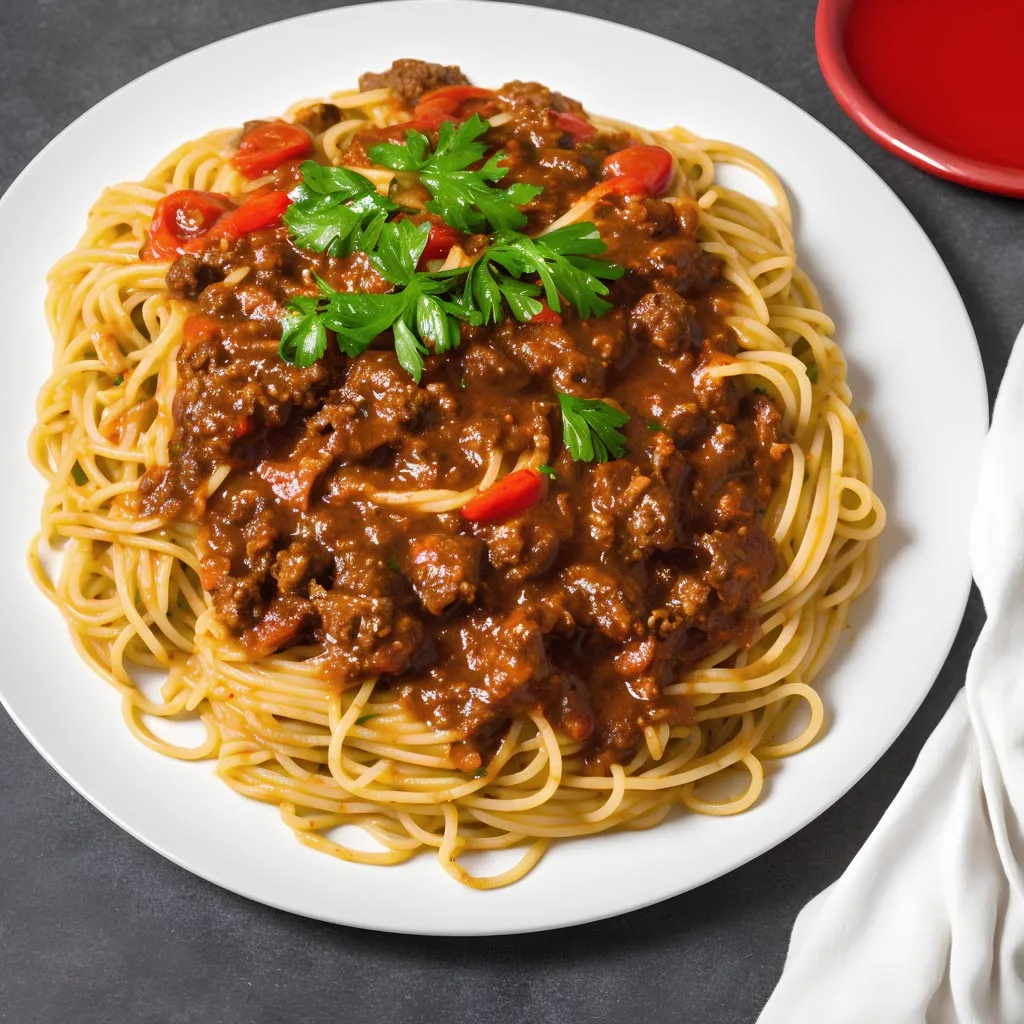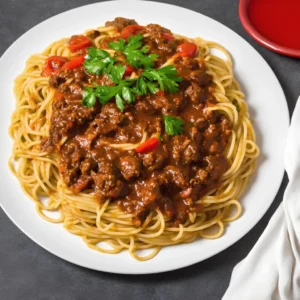
If there’s one dish that never fails to comfort and satisfy, it’s spaghetti bolognese. This classic Italian favorite has made its way into kitchens around the world, loved for its hearty flavors and simple preparation.
Originating from Bologna, Italy, this recipe has a rich history dating back centuries, evolving from humble beginnings to become a beloved staple in households everywhere.
Despite its widespread popularity, mastering spaghetti bolognese doesn’t require culinary expertise. With a few basic ingredients and simple steps, you can recreate this timeless dish in your own kitchen.
Whether you’re cooking for a family dinner or hosting a casual gathering, spaghetti bolognese is sure to please even the pickiest of eaters.
The beauty of spaghetti bolognese lies in its versatility. While the traditional recipe calls for minced beef, onions, garlic, tomatoes, and herbs, you can easily customize it to suit your taste preferences. Whether you prefer a meatier sauce or want to incorporate additional vegetables, the possibilities are endless.
Expert Tip: Don’t skimp on the seasoning. Be sure to taste and adjust the seasoning as needed with salt and pepper to enhance the overall flavor of the dish.
Spaghetti: Spaghetti provides the perfect base for soaking up the rich, savory bolognese sauce. Its long, thin strands complement the hearty texture of the meat sauce, creating a comforting and satisfying dish.
Minced Meat Beef: Ground beef adds depth and flavor to the bolognese sauce, giving it a hearty and satisfying taste. Opt for lean minced beef for a healthier option, or use a combination of beef and pork for added richness.
Onion: Finely chopped onion adds sweetness and depth to the sauce, enhancing its flavor profile. As it cooks down, the onion melts into the sauce, creating a rich and aromatic base for the dish.
Garlic: Minced garlic lends a pungent and aromatic flavor to the sauce, elevating its taste to new heights. Be sure to mince the garlic finely to ensure even distribution throughout the dish.
Olive Oil: Used for sautéing the onion and garlic, olive oil adds a subtle fruity flavor to the sauce while keeping it moist and flavorful.
Tomatoes: Whether using fresh tomatoes or canned, tomatoes form the base of the bolognese sauce, providing a rich and tangy flavor. Chopped tomatoes add texture and depth to the sauce, while tomato paste enhances its color and richness.
Dried Oregano and Basil: These aromatic herbs add a burst of flavor to the sauce, infusing it with a fragrant and savory taste. Dried herbs work well in this recipe, but you can also use fresh herbs for a more vibrant flavor.
Beef Stock Cube: Dissolved in hot water, beef stock adds depth and richness to the bolognese sauce, intensifying its flavor profile. It helps to create a savory base for the sauce, balancing out the acidity of the tomatoes.
Salt and Black Pepper: Essential for seasoning the sauce to taste, salt and black pepper add depth and complexity to the dish, enhancing its overall flavor profile.
Parmesan Cheese: Grated Parmesan cheese adds a final touch of richness and umami flavor to the dish, tying all the flavors together in perfect harmony.
Expert Tip: For a richer flavor, cook the bolognese sauce low and slow, allowing the flavors to develop over time.
Expert Tip: Leftover bolognese sauce makes a delicious filling for stuffed peppers, baked potatoes, or even as a topping for homemade pizza. Simply get creative with your leftovers and enjoy!
The cooking time for spaghetti bolognese typically ranges from 30 to 45 minutes, depending on the thickness of the sauce and the desired level of tenderness of the meat.
Yes, you can substitute ground turkey for beef in this recipe if you prefer a lighter option. Just be aware that the flavor and texture of the sauce may vary slightly.
Yes, spaghetti bolognese is an excellent dish for meal prep. You can make the sauce ahead of time and store it in the refrigerator for up to three days or freeze it for longer storage. Simply reheat the sauce gently on the stovetop or in the microwave before serving.
Absolutely! Feel free to add diced carrots, celery, mushrooms, or bell peppers to the sauce for added flavor and nutrition. Just be sure to sauté them along with the onion and garlic until softened before adding the meat.
While spaghetti itself is typically made from wheat flour and is not gluten-free, you can easily make this recipe gluten-free by using gluten-free spaghetti noodles or other gluten-free pasta alternatives.
Here are some more recipes for you to enjoy! If you my recipes don’t forget to rate and leave a comment.
If you have any recipe suggestions, please do not hesitate to ask me. A great way to stay in contact with me is through Instagram, Facebook, Twitter and YouTube. Don’t forget to tag me @CookwithNabeela in your recipe photos!

Subscribe now to receive my latest recipes directly in your inbox. Stay up-to-date and never miss out!

I love to cook! I want to share with you my favourite, delicious family-friendly recipes. I want to inspire you to create fantastic food for your family every day.
Add your first comment to this post